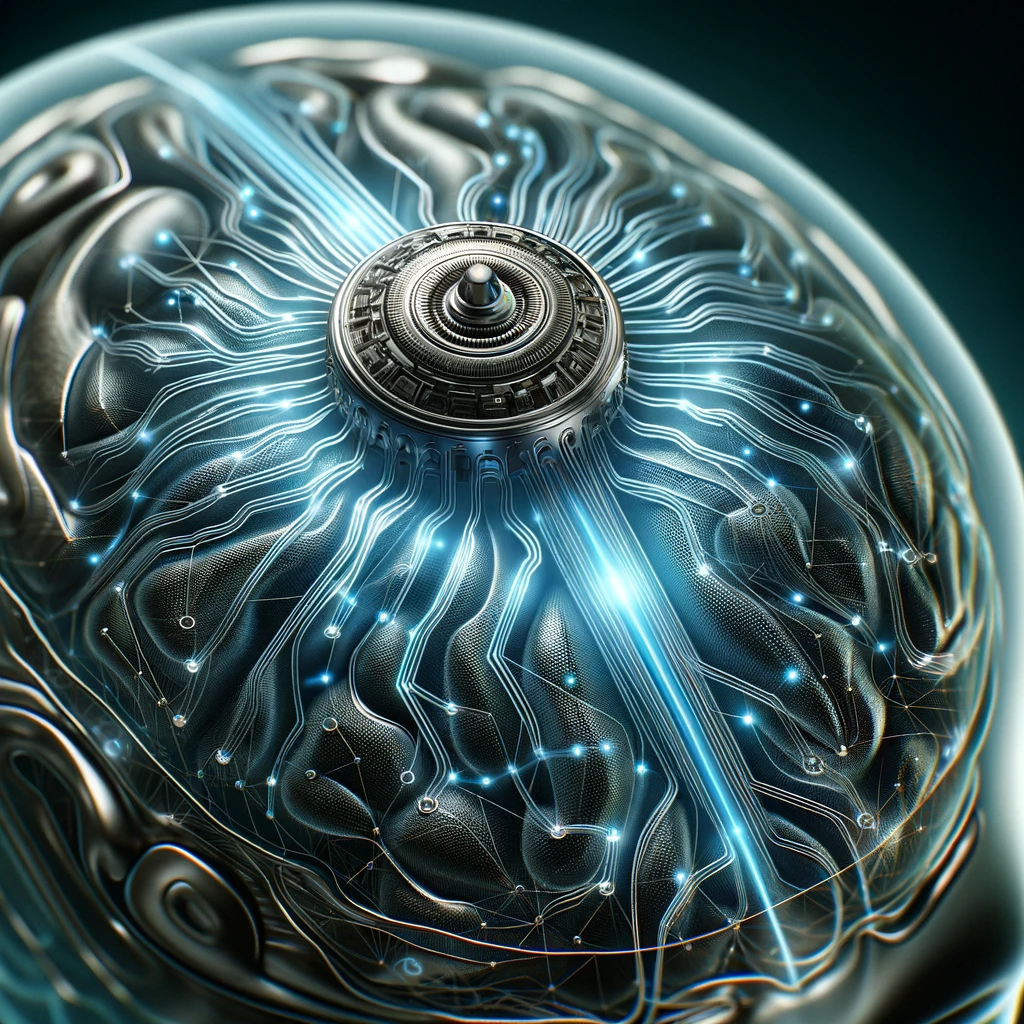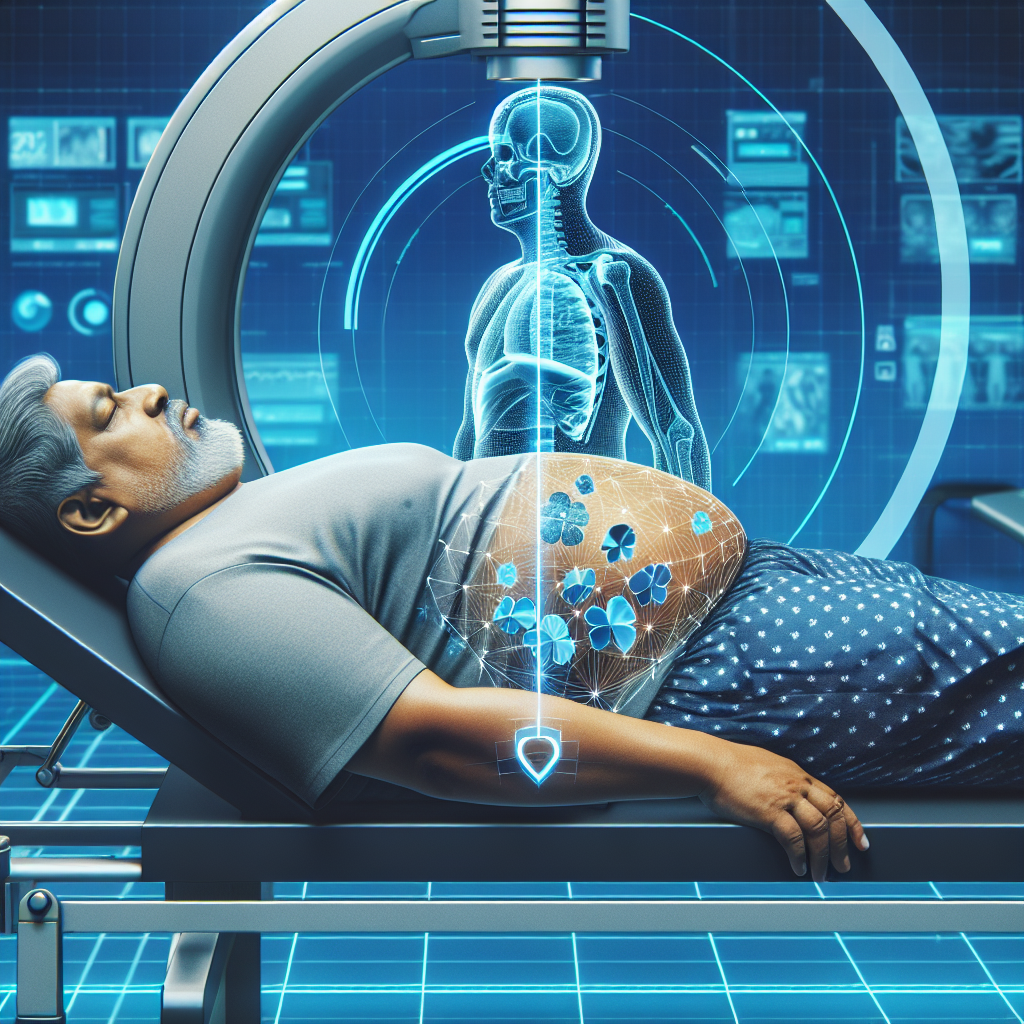A recent livestream showcased a patient named Noland Arbaugh playing chess using a brain implant developed by Neuralink. Arbaugh, who is paralyzed from the shoulders down due to a diving accident, explained that he was able to control the cursor on the screen by imagining its movement. The video featured Arbaugh alongside Bliss Chapman, the lead software engineer at Neuralink, who answered questions about the technology. Arbaugh described his experience using the device as “wild” and praised its intuitive nature.
The Neuralink brain implant allows individuals with paralysis to interact with technology using their thoughts. By implanting a device in the brain, signals can be sent to control external devices such as computers or smartphones. In Arbaugh’s case, he was able to play a game of chess online by simply imagining the movement of the cursor. This groundbreaking technology has the potential to greatly improve the quality of life for individuals with paralysis, giving them greater independence and the ability to engage with the world in new ways.
During the livestream, Arbaugh and Chapman discussed the workings of the Neuralink device. Arbaugh explained that he had undergone surgery to have the implant placed in his brain, and the device was connected to a computer that interpreted his thoughts and translated them into actions on the screen. Chapman emphasized the importance of training the device to recognize the user’s intentions accurately, as this is crucial for seamless interaction.
The video of Arbaugh playing chess using the brain implant has generated excitement and interest in the potential of Neuralink’s technology. It demonstrates the progress being made in the field of brain-computer interfaces and the possibilities for individuals with paralysis to regain control and independence. While the technology is still in its early stages, it holds promise for revolutionizing the way we interact with technology and opening up new opportunities for individuals with disabilities.
Original news source: Neuralink patient seen playing chess using brain implant (BBC)
🎧 Listen:
Slow
Normal
Fast
📖 Vocabulary:
| 1 | livestream | A live transmission of an event over the internet |
| 2 | paralyzed | Unable to move all or part of the body due to illness or injury |
| 3 | intuitive | Easily understood or operated without explicit instruction |
| 4 | implant | A device inserted into the body for medical purposes |
| 5 | cursor | An indicator on a computer screen that shows where the next action or operation will occur |
| 6 | groundbreaking | Innovative and pioneering, breaking new ground |
| 7 | independence | The state of being self-reliant and free from outside control |
| 8 | interact | To communicate or work together |
| 9 | surgery | A medical procedure involving an incision with instruments to repair or remove body tissues |
| 10 | seamless | Smooth and uninterrupted, without any obstacles or difficulties |
| 11 | excitement | A feeling of great enthusiasm and eagerness |
| 12 | interfaces | Points of interaction between a computer and a human |
| 13 | disabilities | Conditions that make it difficult for a person to do certain activities or interact with the world around them |
| 14 | revolutionizing | Causing a dramatic change or improvement in a field |
| 15 | opportunities | Chances or situations for progress or advancement |
Group or Classroom Activities
Warm-up Activities:
– News Summary
Instructions: Divide the class into pairs or small groups. Provide each group with a copy of the article. Instruct them to read the article and then write a brief summary of the main points. Afterward, have each group share their summaries with the class.
– Opinion Poll
Instructions: Divide the class into pairs or small groups. Instruct them to discuss their opinions on the Neuralink brain implant technology. Provide them with a list of discussion questions such as “Do you think this technology will have a positive impact on individuals with paralysis?” or “What are the potential ethical concerns surrounding brain implants?” Afterward, have each group share their opinions with the class.
– Word Association
Instructions: Write the word “Neuralink” on the board. Instruct the class to brainstorm and write down as many words or phrases as they can think of that are related to Neuralink or the article. After a few minutes, have each student or group share their word associations with the class.
– Sketch It
Instructions: Divide the class into pairs or small groups. Instruct them to choose a key moment or concept from the article and create a visual representation of it through a sketch or drawing. Afterward, have each group share their sketches with the class, explaining their choices.
– Pros and Cons
Instructions: Divide the class into pairs or small groups. Instruct them to make a list of the pros and cons of the Neuralink brain implant technology. After a few minutes, have each group share their lists with the class and facilitate a discussion about the advantages and disadvantages of the technology.
🤔 Comprehension Questions:
1. How does the Neuralink brain implant allow individuals with paralysis to interact with technology?
2. What was Noland Arbaugh able to do using the brain implant during the livestream?
3. Why did Arbaugh describe his experience using the device as “wild”?
4. What potential benefits does the Neuralink brain implant have for individuals with paralysis?
5. What did Arbaugh and Chapman discuss during the livestream?
6. How does the Neuralink device interpret the user’s thoughts and translate them into actions?
7. What impact has the video of Arbaugh playing chess using the brain implant had?
8. What possibilities does the technology hold for individuals with disabilities?
Go to answers ⇩
🎧✍️ Listen and Fill in the Gaps:
A recent (1)______ showcased a patient named Noland Arbaugh playing chess using a brain implant developed by (2)______. Arbaugh, who is paralyzed from the shoulders down due to a diving accident, explained that he was able to control the (3)______ on the screen by imagining its movement. The video featured Arbaugh alongside Bliss Chapman, the lead software engineer at Neuralink, who answered (4)______ about the technology. Arbaugh described his experience using the device as “wild” and praised its intuitive nature.
The Neuralink brain implant allows individuals with paralysis to interact with technology using their thoughts. By implanting a device in the brain, signals can be sent to control (5)______ devices such as (6)______ or smartphones. In Arbaugh’s case, he was able to play a game of chess online by simply imagining the movement of the cursor. This groundbreaking technology has the potential to greatly (7)______ the quality of life for individuals with paralysis, (8)______ them greater independence and the ability to engage with the world in new ways.
During the livestream, Arbaugh and Chapman discussed the workings of the Neuralink device. Arbaugh explained that he had (9)______ surgery to have the implant placed in his brain, and the device was connected to a (10)______ that (11)______ his thoughts and (12)______ them into actions on the screen. Chapman emphasized the importance of training the device to recognize the user’s intentions accurately, as this is crucial for seamless interaction.
The video of Arbaugh playing chess using the brain implant has generated excitement and (13)______ in the potential of Neuralink’s technology. It (14)______ the progress being made in the field of brain-computer (15)______ and the possibilities for individuals with paralysis to regain control and independence. While the technology is still in its early stages, it holds promise for revolutionizing the way we interact with technology and (16)______ up new opportunities for individuals with disabilities.
Go to answers ⇩
💬 Discussion Questions:
Students can ask a partner these questions, or discuss them as a group.
1. What is a brain implant and how does it work?
2. How would you feel if you had the opportunity to control technology with your thoughts?
3. Do you think brain implants like Neuralink’s have the potential to revolutionize the way we interact with technology? Why or why not?
4. What are some potential benefits of brain implants for individuals with paralysis?
5. How do you think brain-computer interfaces could improve the quality of life for individuals with disabilities?
6. Do you think brain implants could eventually be used for purposes other than assisting individuals with disabilities? Why or why not?
7. What are some potential ethical considerations or concerns associated with brain implants?
8. How do you think society would change if brain implants became more widespread and accessible?
9. Do you think brain implants could be used to enhance human abilities beyond what is considered “normal”? Why or why not?
10. How do you think brain implants could impact the field of medicine and healthcare?
11. Do you think brain implants could eventually replace traditional forms of communication and interaction? Why or why not?
12. How would you feel if brain implants became a common part of everyday life?
13. What are some potential challenges or obstacles that need to be overcome for brain implants to become more widely used?
14. Do you like the idea of brain implants? Why or why not?
15. How do you think brain implants could change the way we understand the human brain and consciousness?
Individual Activities
📖💭 Vocabulary Meanings:
Match each word to its meaning.
Words:
1. livestream
2. paralyzed
3. intuitive
4. implant
5. cursor
6. groundbreaking
7. independence
8. interact
9. surgery
10. seamless
11. excitement
12. interfaces
13. disabilities
14. revolutionizing
15. opportunities
Meanings:
(A) A feeling of great enthusiasm and eagerness
(B) A medical procedure involving an incision with instruments to repair or remove body tissues
(C) An indicator on a computer screen that shows where the next action or operation will occur
(D) Innovative and pioneering, breaking new ground
(E) Smooth and uninterrupted, without any obstacles or difficulties
(F) Conditions that make it difficult for a person to do certain activities or interact with the world around them
(G) Points of interaction between a computer and a human
(H) The state of being self-reliant and free from outside control
(I) To communicate or work together
(J) Chances or situations for progress or advancement
(K) A live transmission of an event over the internet
(L) A device inserted into the body for medical purposes
(M) Causing a dramatic change or improvement in a field
(N) Unable to move all or part of the body due to illness or injury
(O) Easily understood or operated without explicit instruction
Go to answers ⇩
🔡 Multiple Choice Questions:
1. What is the purpose of the Neuralink brain implant?
(a) To control external devices such as computers or smartphones.
(b) To allow individuals with paralysis to interact with technology using their thoughts.
(c) To improve the quality of life for individuals with disabilities.
(d) To revolutionize the way we interact with technology.
2. How did Noland Arbaugh control the cursor on the screen?
(a) By using his voice commands.
(b) By moving his eyes.
(c) By using a joystick.
(d) By imagining its movement.
3. What did Arbaugh describe his experience using the device as?
(a) “Wild”
(b) “Difficult”
(c) “Confusing”
(d) “Frustrating”
4. What did the livestream showcase?
(a) Bliss Chapman explaining the workings of the Neuralink device.
(b) The progress being made in the field of brain-computer interfaces.
(c) The potential of Neuralink’s technology to revolutionize the way we interact with technology.
(d) Noland Arbaugh playing chess using the Neuralink brain implant.
5. What is crucial for seamless interaction with the Neuralink device?
(a) Having a strong internet connection.
(b) Using a specific type of computer or smartphone.
(c) Training the device to recognize the user’s intentions accurately.
(d) Having prior experience with brain implants.
6. What has the video of Arbaugh playing chess generated?
(a) Controversy and skepticism about the safety of brain implants.
(b) A debate about the ethics of using technology to control external devices.
(c) Excitement and interest in the potential of Neuralink’s technology.
(d) A discussion about the limitations of the Neuralink brain implant.
7. What does the article say about the technology’s potential for individuals with disabilities?
(a) It is still in its early stages and may not be effective for everyone.
(b) It has the potential to greatly improve their quality of life and independence.
(c) It is only useful for individuals with paralysis.
(d) It is not yet clear how the technology can be applied to other disabilities.
8. What does the article say about the future of brain-computer interfaces?
(a) They hold promise for revolutionizing the way we interact with technology.
(b) They are unlikely to be widely adopted due to safety concerns.
(c) They will only be accessible to individuals with significant financial resources.
(d) They are not a priority for technological advancement.
Go to answers ⇩
🕵️ True or False Questions:
1. The Neuralink brain implant allows individuals with paralysis to interact with technology using their thoughts.
2. The video of Arbaugh playing checkers with the brain implant has generated skepticism and disinterest in the potential of Neuralink’s technology.
3. Arbaugh described his experience using the brain implant as “wild” and praised its intuitive nature.
4. Signals from the brain implant can be sent to control internal devices like tablets or smartwatches.
5. Bliss Chapman, the lead software engineer at Neuralink, answered questions about the technology during the livestream.
6. The livestream showcased a paralyzed patient named Noland Arbaugh using a brain implant developed by Neuralink.
7. Arbaugh was unable to control the cursor on the screen by imagining its movement.
8. Arbaugh played a game of checkers online by imagining the movement of the cursor.
Go to answers ⇩
📝 Write a Summary:
Write a summary of this news article in two sentences.
Check your writing now with the best free AI for English writing!
Writing Questions:
Answer the following questions. Write as much as you can for each answer.
Check your answers with our free English writing assistant!
1. How does the Neuralink brain implant allow individuals with paralysis to interact with technology?
2. What was Noland Arbaugh’s experience using the Neuralink brain implant?
3. What is the potential impact of the Neuralink technology on individuals with paralysis?
4. What is the importance of training the Neuralink device to recognize the user’s intentions accurately?
5. How has the video of Arbaugh playing chess generated excitement and interest in Neuralink’s technology?
✅ Answers
🤔✅ Comprehension Question Answers:
1. The Neuralink brain implant allows individuals with paralysis to interact with technology by implanting a device in the brain that can send signals to control external devices such as computers or smartphones.
2. During the livestream, Noland Arbaugh was able to play a game of chess online by imagining the movement of the cursor on the screen.
3. Arbaugh described his experience using the device as “wild” because he was able to control the cursor on the screen using only his thoughts, which was an entirely new and exciting experience for him.
4. The Neuralink brain implant has the potential to greatly improve the quality of life for individuals with paralysis by giving them greater independence and the ability to interact with technology and the world in new ways.
5. During the livestream, Arbaugh and Chapman discussed the workings of the Neuralink device, including the surgery to implant it in the brain and the importance of training the device to accurately recognize the user’s intentions.
6. The Neuralink device interprets the user’s thoughts by connecting to a computer that analyzes the signals from the brain implant and translates them into actions on the screen.
7. The video of Arbaugh playing chess using the brain implant has generated excitement and interest in the potential of Neuralink’s technology, showcasing the progress being made in brain-computer interfaces and the possibilities for individuals with paralysis to regain control and independence.
8. The technology holds the potential to revolutionize the way individuals with disabilities interact with technology, opening up new opportunities for them to regain independence and engage with the world in ways that were previously not possible.
Go back to questions ⇧
🎧✍️✅ Listen and Fill in the Gaps Answers:
(1) livestream
(2) Neuralink
(3) cursor
(4) questions
(5) external
(6) computers
(7) improve
(8) giving
(9) undergone
(10) computer
(11) interpreted
(12) translated
(13) interest
(14) demonstrates
(15) interfaces
(16) opening
Go back to questions ⇧
📖💭✅ Vocabulary Meanings Answers:
1. livestream
Answer: (K) A live transmission of an event over the internet
2. paralyzed
Answer: (N) Unable to move all or part of the body due to illness or injury
3. intuitive
Answer: (O) Easily understood or operated without explicit instruction
4. implant
Answer: (L) A device inserted into the body for medical purposes
5. cursor
Answer: (C) An indicator on a computer screen that shows where the next action or operation will occur
6. groundbreaking
Answer: (D) Innovative and pioneering, breaking new ground
7. independence
Answer: (H) The state of being self-reliant and free from outside control
8. interact
Answer: (I) To communicate or work together
9. surgery
Answer: (B) A medical procedure involving an incision with instruments to repair or remove body tissues
10. seamless
Answer: (E) Smooth and uninterrupted, without any obstacles or difficulties
11. excitement
Answer: (A) A feeling of great enthusiasm and eagerness
12. interfaces
Answer: (G) Points of interaction between a computer and a human
13. disabilities
Answer: (F) Conditions that make it difficult for a person to do certain activities or interact with the world around them
14. revolutionizing
Answer: (M) Causing a dramatic change or improvement in a field
15. opportunities
Answer: (J) Chances or situations for progress or advancement
Go back to questions ⇧
🔡✅ Multiple Choice Answers:
1. What is the purpose of the Neuralink brain implant?
Answer: (b) To allow individuals with paralysis to interact with technology using their thoughts.
2. How did Noland Arbaugh control the cursor on the screen?
Answer: (d) By imagining its movement.
3. What did Arbaugh describe his experience using the device as?
Answer: (a) “Wild”
4. What did the livestream showcase?
Answer: (d) Noland Arbaugh playing chess using the Neuralink brain implant.
5. What is crucial for seamless interaction with the Neuralink device?
Answer: (c) Training the device to recognize the user’s intentions accurately.
6. What has the video of Arbaugh playing chess generated?
Answer: (c) Excitement and interest in the potential of Neuralink’s technology.
7. What does the article say about the technology’s potential for individuals with disabilities?
Answer: (b) It has the potential to greatly improve their quality of life and independence.
8. What does the article say about the future of brain-computer interfaces?
Answer: (a) They hold promise for revolutionizing the way we interact with technology.
Go back to questions ⇧
🕵️✅ True or False Answers:
1. The Neuralink brain implant allows individuals with paralysis to interact with technology using their thoughts. (Answer: True)
2. The video of Arbaugh playing checkers with the brain implant has generated skepticism and disinterest in the potential of Neuralink’s technology. (Answer: False)
3. Arbaugh described his experience using the brain implant as “wild” and praised its intuitive nature. (Answer: True)
4. Signals from the brain implant can be sent to control internal devices like tablets or smartwatches. (Answer: False)
5. Bliss Chapman, the lead software engineer at Neuralink, answered questions about the technology during the livestream. (Answer: True)
6. The livestream showcased a paralyzed patient named Noland Arbaugh using a brain implant developed by Neuralink. (Answer: True)
7. Arbaugh was unable to control the cursor on the screen by imagining its movement. (Answer: False)
8. Arbaugh played a game of checkers online by imagining the movement of the cursor. (Answer: False)
Go back to questions ⇧












